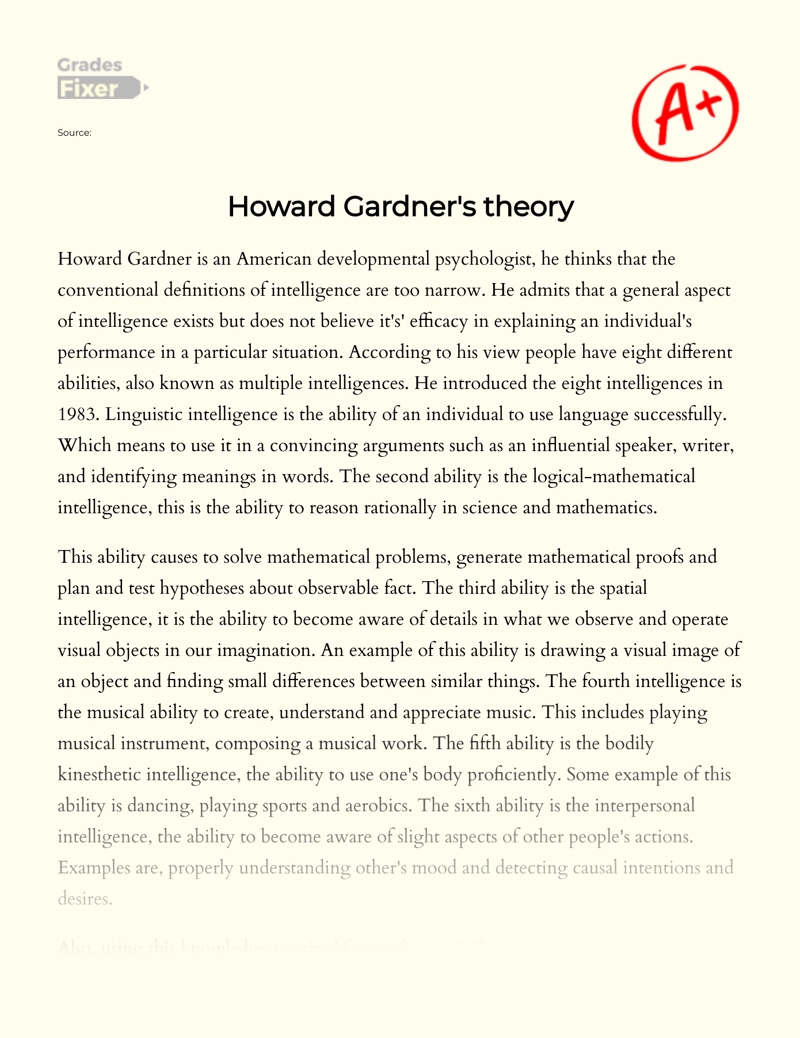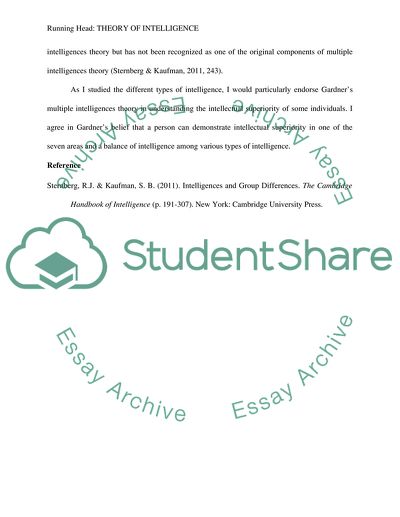The theory of multiple intelligences, proposed by psychologist Howard Gardner in 1983, suggests that there are multiple ways in which individuals can be intelligent. Gardner identified eight distinct types of intelligence: linguistic, logical-mathematical, spatial, musical, bodily-kinesthetic, interpersonal, intrapersonal, and naturalistic.
Linguistic intelligence refers to the ability to use language effectively and to comprehend written and spoken words. This type of intelligence is often associated with writers, speakers, and debaters.
Logical-mathematical intelligence involves the ability to reason logically and to perform mathematical operations. This type of intelligence is commonly associated with scientists, engineers, and analysts.
Spatial intelligence involves the ability to perceive and manipulate spatial relationships, such as in art or navigation. This type of intelligence is often found in architects, pilots, and surgeons.
Musical intelligence involves the ability to perceive and create music, as well as to understand its structure and function. This type of intelligence is common among musicians and composers.
Bodily-kinesthetic intelligence involves the ability to use the body effectively, such as in sports or dance. This type of intelligence is often found in athletes, dancers, and actors.
Interpersonal intelligence involves the ability to understand and interact effectively with other people. This type of intelligence is common among leaders, teachers, and counselors.
Intrapersonal intelligence involves the ability to understand one's own thoughts, feelings, and motivations. This type of intelligence is often found in introspective individuals, such as philosophers and psychologists.
Naturalistic intelligence involves the ability to understand and interact with the natural world, such as in gardening or biology. This type of intelligence is common among farmers, naturalists, and environmentalists.
The theory of multiple intelligences suggests that individuals may have different combinations and strengths of these intelligences, and that intelligence cannot be accurately measured by a single test or score. This theory has important implications for education, as it suggests that traditional methods of teaching and assessment may not adequately reflect the diverse intelligences of students. Instead, educators should seek to create learning environments that allow students to develop and demonstrate their strengths in a variety of ways.
Overall, the theory of multiple intelligences offers a more nuanced and comprehensive understanding of human intelligence, and suggests that there are many different ways in which individuals can be intelligent and successful.
Cause and effect writing is a type of writing that examines the relationship between two events or situations, specifically focusing on the reasons why one event or situation occurs and the consequences or effects that result from it. This type of writing is often used in academic and professional contexts to analyze and understand complex phenomena and to identify the underlying causes of problems or issues.
Cause and effect writing begins by identifying and explaining the cause of an event or situation, which is often referred to as the "cause" in this type of writing. This can be a specific event, a set of circumstances, or a combination of both. The writer then goes on to describe the effects or consequences that result from the cause, which are often referred to as the "effects" in this type of writing.
One of the key characteristics of cause and effect writing is that it is analytical in nature, meaning that it involves examining and analyzing data and evidence in order to understand the underlying causes and effects of a particular event or situation. This may involve using a variety of research methods, including interviews, surveys, experiments, and other methods, to gather data and evidence that can help to support the writer's arguments and conclusions.
In addition to being analytical, cause and effect writing is also often argumentative in nature, as the writer may be trying to persuade the reader to accept a particular point of view or to take a specific course of action. As such, cause and effect writing may involve the use of logical reasoning and evidence to support the writer's arguments and to convince the reader of their validity.
Overall, cause and effect writing is an important tool for understanding and explaining the relationships between events and situations, and for identifying and addressing problems and issues in a variety of contexts. By examining and analyzing the underlying causes of events and situations, and by exploring the consequences or effects that result from them, writers can help to shed light on complex phenomena and to inform decision-making and problem-solving efforts.





